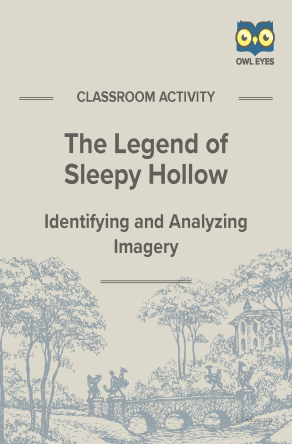The Legend of Sleepy Hollow Imagery Activity
- 8 pages
- Subject: Imagery, Literary Devices, Tone, Lesson Plans and Educational Resources
- Common Core Standards: RL.11-12.1, RL.11-12.4, RL.11-12.5, RL.9-10.1, RL.9-10.4
Additional The Legend of Sleepy Hollow Resources
Product Description
Washington Irving’s 1820 story “The Legend of Sleepy Hollow” has entered the canon of American folklore forever. The tale of Ichabod Crane, the hapless Yankee schoolteacher who runs afoul of the Dutch settlers of the Hudson Valley, is well loved as a classic gothic tale. New readers of the story will be impressed, however, by Irving’s skillful touch as a writer, especially his ability to bring us into the world of the Hudson Valley with rich, descriptive imagery.
Skills: analysis, drawing inferences from text, close reading, identifying the relationship between words
About This Document
The Owl Eyes Imagery activity gives students an opportunity to practice identifying and analyzing imagery. Imagery within a text creates a sensory experience that can connect readers to a text’s setting, atmosphere, or overall aesthetic. Studying imagery will help students understand how narrators or principal characters feel. The main components of this worksheet include the following:
- A brief introduction to the text
- A handout on types of imagery with examples from classic texts
- A step-by-step guide to activity procedure
- Selected examples of imagery from the text
In completing this worksheet, students will learn to identify and analyze different kinds of imagery in order to develop close reading skills and identify the effect imagery has on their reading experience.







